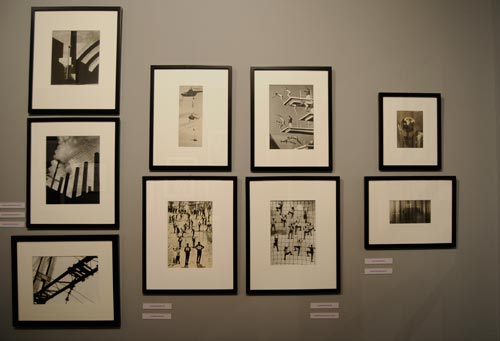
16.09.2010-30.10.2010
16.09.2010 – 30.10.2010
Orangerie, Wilanow Palace Museum
The ambition of this programme of cyclic events, showing the most interesting private collections of contemporary and modern art, is not only to show the ” latent capital” of those publicly unknown collections but, also, to launch a debate on the symbolic capital of the collections being currently created. Collecting as a passion, having a huge cognitive potential, has long since been acknowledged by scholars of culture. Private collections since the 15th century, as an expert in their history claims, have ranked among some the most important entities where cultural changes have begun. The role of private collections in the area of contemporary and modern art is best proved by the origins of many of the most important exhibiting institutions of the 20th century, which were founded upon private collections.
The collectors’ movement, taking shape in Poland over the last few years, is an opportunity to fill-in the gaps relating to those images of art which we know from museum and public collections. Moreover, private collections, being independent from public finances and state policy, can play an important role in shaping our culture, offering differences and complementing the familiar image of contemporary art, proposing a reading of art and its history different from the museum canons.
RThe eponymous “latent capital” of these collections should not be recalculated into market value however. Following Walter Benjamin’s line of thought, we would like to emphasise the seditious potential of the latent, the potential of the targeted “against the typical and classifiable”; the potential urged by the gathering of passion in the rebellious gesture, rejecting tradition and authority, capable of “shattering the standards of traditional art history”. The presentation of private collections in the Orangery of the Wilanów Palace refers significantly to the history of this place, very important for the history and tradition of collecting. Here, in 1805, Stanisław Kostka Potocki, a great art connoisseur and collector, opened his art collections to the public, thus launching one of the first museums in Poland.
The first collection of this cycle, is a selection of specimens from Cezary Pieczyński’s collection. This collection has been developed following various paths, among which are: the Polish avant-garde of the 1920s and 1930s, modernism of the 1940s, 1950s, and 1960s, and a large collection of photography from the 20th century, which has only recently been launched. It is the photography – a domain weakly represented in the majority of Polish museum collections – which will be shown as the first in the cycle of “Latent Capital”.
Cezary Pieczyński’s collection offers a view of 20th-century photography, as it becomes a separate field of artistic research. The exhibition, showing part of this collection, is an exceptional occasion for the Polish public to see works considered to be some of the greatest achievements in the history of Polish and world photography. The pieces selected embrace the unique works of the first experimenters, such as Eadweard Muybridge, with photographs documenting movement, dating from the 19th century. There are also photographs by the pioneers of artistic photography, such as the American Paul Strand, and the works of outstanding representatives of various avant-gardes: dadaism, constructivism and surrealism (Raoul Hausmann, Man Ray, Alexander Rodchenko and Christian Schad), along with the works of some of the leading contemporary creators (Nan Golding, Thomas Ruff and Cindy Sherman).
The exhibition features works signed by some of the classic names of the 20th century, placed alongside some remarkable pieces by anonymous photographers. The exhibition is divided into sequences, which follow neither the chronology of time nor that of the various “-isms”. Linear narration and geographic classification having been rejected, the exhibition shows the juxtapositions of Polish and foreign photographers within various thematic fields. A copious selection of Polish photography, dating back to the avant-garde of the 1920s – 1940s, passes through the achievement of Karol Hiller – the creator of heliography, and the new experiments of the 1940s (Zbigniew Dłubak and Fortunata Obrąpalska), to the media exploration of the 1970s (Natalia LL, Ireneusz Pierzgalski and Józef Robakowski). Overall, the collection embraces artists of the younger generation along with deceased masters, such as Edward Hartwig, Roman Cieślewicz and Zofia Rydet.
Janusz Bąkowski (1922-2005), Zdzisław Beksiński (1929-2005), Lev Borodulin (1923-1999), Horace Bristol (1908–1997), Roman Cieślewicz (1930-1996), Jiřĭ David (1956), Zbigniew Dłubak (1921–2005), František Drtikol (1883–1961), Oscar Fischinger (1900–1967), Jorge Friedman (1910-2002), Nan Goldin (1953), Gretta Sarfaty Marchant (1947), Bobby Grossman (1950), Heinz Hajek-Halke (1898–1983), Edward Hartwig (1909–2003), Raul Hausmann (1886 -1971), Karol Hiller (1891–1939), Marta Hoepffner (1912-2000), Lotte Jacobi (1896-1990), György Kepes (1906 – 2001), Michał Kokot (1944), Jerzy Kosiński (1933 – 1991), Konrad Kuzyszyn (1951), Paweł Kwiek (1952), Andrzej Lachowicz (1939), Jerzy Lewczyński (1924), Dora Maar (1907–1997), Man Ray (1890–1976), Antoni Mikołajczyk (1939–2000), László Moholy-Nagy (1895-1946), Eadweard Muybridge (1830–1904), Natalia LL (1937), Fortunata Obrąpalska (1909–2004), Andrzej Paruzel (1951), Andrzej Pawłowski (1924-1986), Walter Peterhans (1897–1960), Marek Piasecki (1935), Paweł Pierściński (1938), Ireneusz Pierzgalski (1929), Józef Robakowski (1939), Aleksander Rodczenko (1891–1956), Jaroslav Rössler (1902-1990), Josef Růžička (1870-1960), Thomas Ruff (1958), Zofia Rydet (1911–1997), Tadeusz Rydet (1909-19870, Zygmunt Rytka (1947), Christian Schad (1894-1982), Roger Shall (1904–1985), Bronisław Schlabs (1920-2009), Toni Schneiders (1920-2006), Paul Schuitema (1897–1973), Leonard Sempoliński (1902-1988), Cindy Sherman (1954), Arthur Siegel (1913-1978), Aaron Siskind (1903–1991), Zdzisław Sosnowski (1947), Maciej Stępiński (1972), Paul Strand (1890-1976), (1918-2002), Marian Szulc (1922-1976), Ryszard Waśko (1949).
